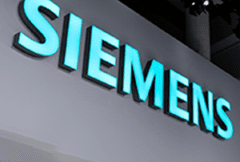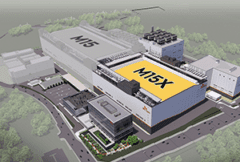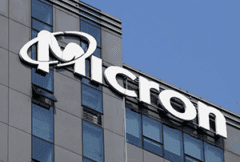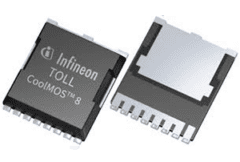INDUSTRY UPDATES
ASC Global brings you with our Component Compass report the latest semiconductor industry findings to provide valuable guidance for maneuvering market intervals. We excel in supply chain strategies that effectively address market volatility.
If any questions or concerns arise, kindly reach out to your Account Manager or our support team at info@ascglobal.com | +1 954 718 2950.

Get biweekly updates to your inbox

Last Updated: 3/21/25
EU accuses Google & gives Apple antitrust mandates
The European Commission accused Google of favoring its services in search results and restricting cheaper alternatives and ordered Apple to open iOS connectivity to third-party devices, citing the 2022 Digital Markets Act. This move may provoke a U.S.-EU trade dispute, as President Trump has threatened tariffs on nations penalizing American tech firms. While no fines were issued, the charges signal potential future penalties.
Euro semiconductor firms push for broader “Chips Act”
European semiconductor firms are urging a broader strategy beyond the €43B European Chips Act, focusing on R&D, materials, and design. Industry leaders, including Infineon and ASML, advocate for “Chips Act 2.0” to boost competitiveness. The EU’s push for tech sovereignty contrasts with the UK’s focus on chip design and AI partnerships with the US.
Amazon cuts Trainium AI server prices to compete with NVIDIA
Amazon Web Services (AWS) promotes its Trainium AI chips as a cost-effective alternative to NVIDIA’s H100, offering similar performance at a quarter of the cost. As Google and Microsoft develop in-house AI chips, AWS aims to attract customers with Trainium’s pricing but faces challenges transitioning developers dependent on NVIDIA’s software. The Trainium3 chip, built using a 3nm process, will launch by end-2025.
Samsung Begins Production of 4th-Gen 4nm Process
Samsung has started mass production of its fourth-generation 4nm process, aimed at high-performance computing and AI applications, bolstering its foundry business. However, due to economic concerns linked to former U.S. President Trump’s proposed tariffs, Samsung has halted future investments in Mexico and announced a 30% workforce reduction in the country.
NAND supply tightens; Micron, Samsung raise prices
The global NAND flash market is seeing price hikes, with SanDisk announcing a 10% increase in April, followed by Micron, Samsung, and SK Hynix. Supply constraints, including production cuts and a power outage at Micron’s Singapore facility, are driving the increases. NAND prices are expected to rise by 10% or more by April, altering previous market expectations of a price decline. Additionally, DRAM prices are also rising, reflecting a broader upward trend in memory market pricing.
SoftBank acquires server-grade Arm designer Ampere
SoftBank Group is acquiring Ampere Computing for $6.5 billion, buying out Oracle and Carlyle’s stakes. Ampere, known for its manycore Arm-based CPUs, serves Google, Microsoft, and Tencent. Its upcoming AmpereOne Aurora chip, featuring 512 cores, is designed for AI workloads. SoftBank aims to integrate Ampere within its ecosystem, potentially shifting workloads from x86 to Arm-based processors.
More Component Compass news

Siemens to cut 6,000+ jobs amid Automation & EV challenges
Siemens plans to cut over 6,000 jobs across its automation and EV charging sectors by the end of fiscal 2025, citing declining demand, especially in China and Germany, and growing competitive pressures. This includes 5,600 jobs in automation and 450 in EV charging. This marks Siemens’ largest job reduction since 2017. Similar moves are seen in the automotive industry, with Volkswagen and Nissan also announcing job cuts.

SK hynix fast-tracks M15X fab for Broadcom
SK hynix is accelerating M15X fab equipment installation to October, two months early, due to rising HBM demand, reportedly from Broadcom. Production for Broadcom begins in Q3, potentially reaching 30% of SK hynix’s HBM output by 2025. The fab’s capacity may nearly double, while SK hynix expands 1b DRAM production. It also shipped the first 12-layer HBM4 samples.

Micron Expands Cooperation in Taiwan
Micron is expanding HBM production in Taiwan to meet rising AI demand. It will repurpose DRAM packaging and testing capacity, creating a gap filled by its partnership with Powertech Technology Inc. (PTI). PTI will adopt stacked packaging solutions, starting mass production in Q2, with quarterly growth of 50% and higher capacity utilization.

Intel partners with Taiwanese firms for cooling technology
Intel is enhancing thermal management by partnering with Taiwanese firms to develop ultra-fluid cooling for AI servers, competing with NVIDIA. Meanwhile, its Arizona wafer fab has begun the initial 18A process node production, with mass production expected ahead of schedule by mid-year.

TI unveils power chips to boost data center efficiency
Texas Instruments (TI) has launched new power management solutions for AI-driven data centers. The TPS1685 is the industry’s first 48V integrated hot-swap eFuse with power-path protection, enhancing hardware reliability. TI also introduced GaN power stages—LMG3650R035, LMG3650R025, and LMG3650R070—offering >98% efficiency in TOLL packaging. These innovations optimize energy efficiency and scalability in next-gen data center architectures.

Infineon partners with Enphase to enhance energy efficiency
Infineon’s 600V CoolMOS™ 8 high-voltage superjunction MOSFETs enable Enphase Energy to streamline solar inverter designs, reduce MOSFET resistance, and lower assembly costs. The advanced devices, with an 18% to 33% reduction in gate charge over earlier series, improve efficiency, increase power density, and set a global benchmark in high-voltage applications supporting decarbonization across sectors including EV charging and UPS systems.
Market Report

